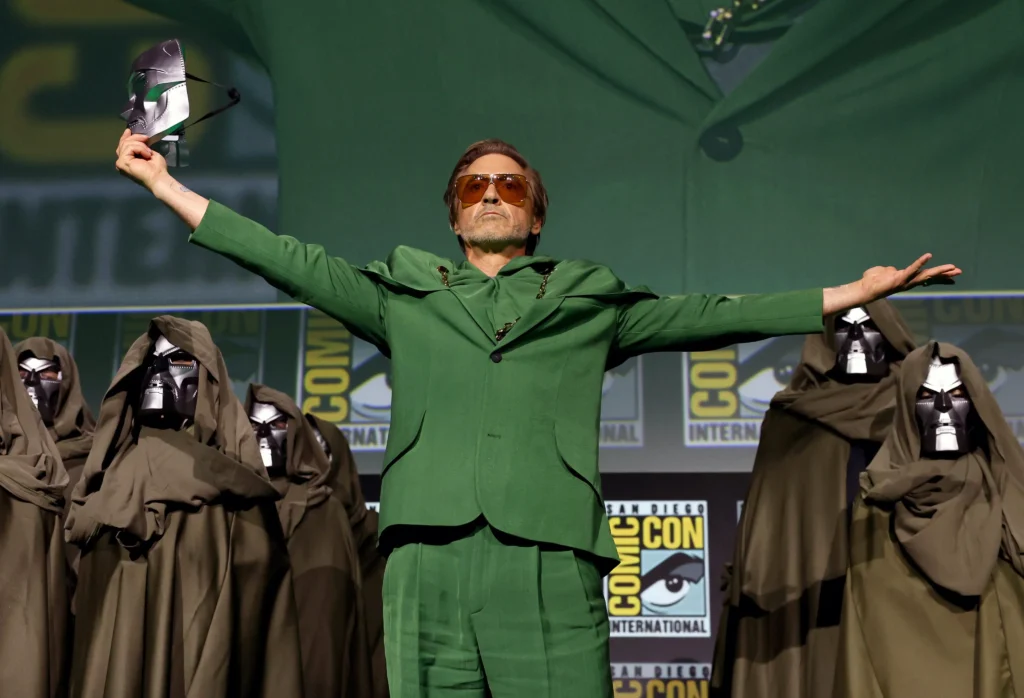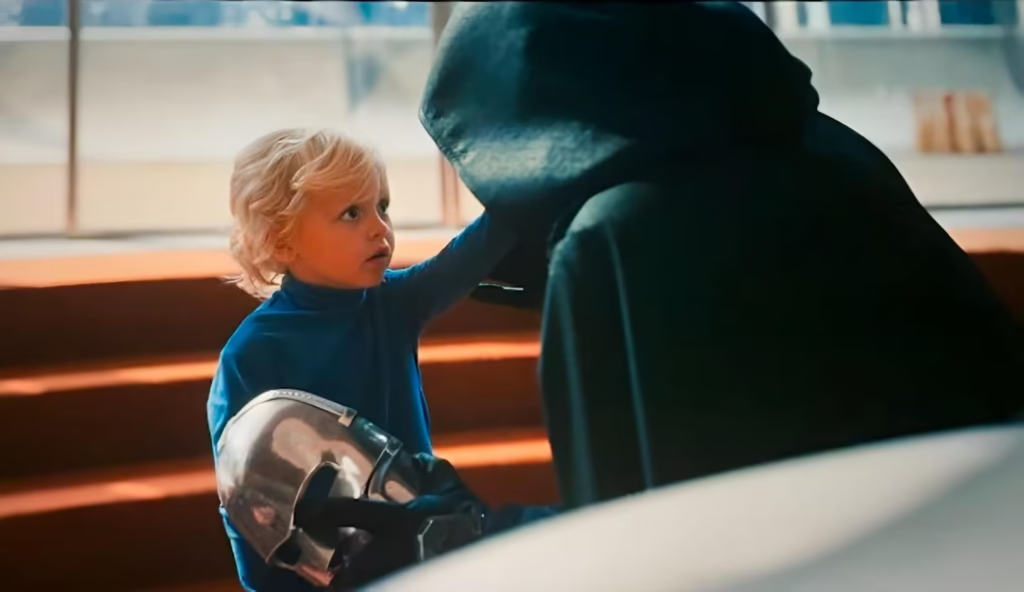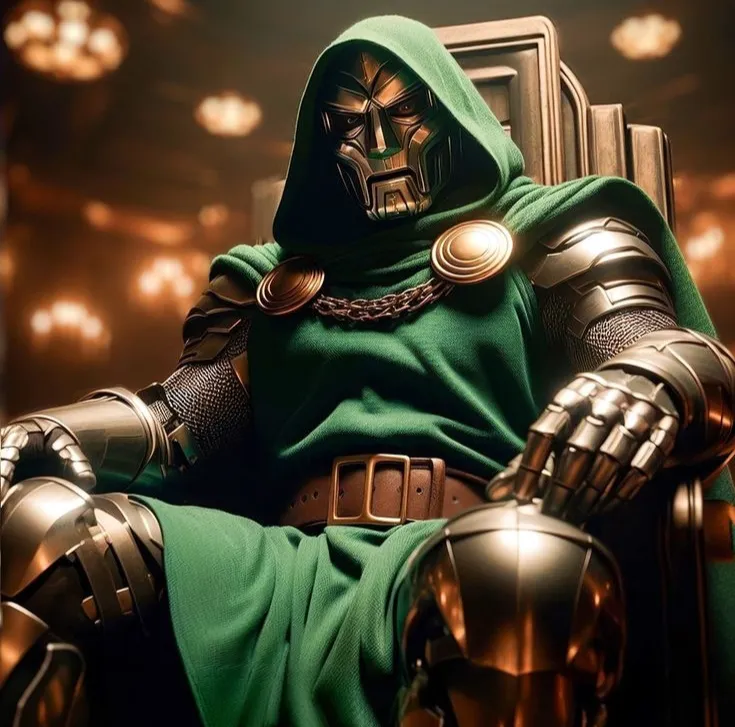The Fantastic Four: First Steps post-credits scene has sent shockwaves through the MCU fanbase, and for good reason. Robert Downey Jr.’s Dr. Doom has officially arrived, setting up what promises to be an epic confrontation in Avengers: Doomsday. But this isn’t just a simple villain introduction – there are layers of meaning, timeline implications, and cosmic connections that deserve a deeper dive.
After weeks of analysis and new revelations from cast and crew interviews, we now have a clearer picture of what this pivotal scene means for the future of the Marvel Cinematic Universe. The meeting between Dr. Doom and young Franklin Richards isn’t just a setup for the next Avengers film – it’s a cosmic chess move that could reshape reality itself.
When Does the Dr. Doom Scene Actually Take Place?
The post-credits scene occurs four years after the main events of Fantastic Four: First Steps, placing it firmly in 1969 or 1970 within the 828 universe timeline. This timing isn’t arbitrary – it’s strategically chosen to serve the larger MCU narrative.
Since the film’s epilogue (featuring the Ted Gilbert show) is set several months after the December 1965 battle with Galactus, Franklin Richards would now be approximately five years old. This age is crucial because Avengers: Doomsday needs Franklin to be old enough to communicate meaningfully with adults and make important decisions without being completely dependent like a toddler.
The visual cues in the scene reinforce this temporal shift. Sue Storm’s appearance reflects the cultural changes of the late 1960s:
- Red turtleneck and plaid skirt replacing her earlier 1960s styling
- Longer hairstyle characteristic of women’s fashion in the later part of the decade
- Updated Baxter Building decor featuring reds and browns instead of the previous baby blues
Interestingly, baby Franklin sports a blue turtleneck, symbolically showing his eagerness to join his parents’ superhero legacy. The aesthetic evolution mirrors the shift from early Mad Men seasons to the later, more tumultuous periods of the 1960s.
Who Actually Filmed the Dr. Doom Scene?
Yes, Robert Downey Jr. was physically on set wearing the green hood, according to confirmed reports from director Matt Shackman and actress Vanessa Kirby. This wasn’t a body double or post-production magic – it was Downey himself working alongside the young actor playing Franklin Richards.

The scene was directed by the Russo Brothers, who will helm Avengers: Doomsday, ensuring continuity between this setup and the upcoming film. Vanessa Kirby revealed in her Variety interview that the filming involved:
- Robert Downey Jr. in full costume
- The Russo Brothers directing
- The child actor playing Franklin Richards
- Kirby herself as Sue Storm
Kirby described Downey as “never not being on set” and called him “our leader” and “our Godfather,” suggesting his deep involvement in shaping these interconnected storylines.
What Does Franklin Richards’ Touch Really Mean?
Franklin isn’t healing Dr. Doom’s scarred face – the interaction is far more significant than simple restoration. When you examine Franklin’s hand placement, he’s reaching toward Doom’s eye level, not his cheeks or chin. This detail is crucial because of how the Power Cosmic manifests in this universe.

The Power Cosmic consistently emanates from the eyes:
- Galactus’ cosmic power first appears through his eyes in the film
- Susan Storm’s resurrection features purple cosmic glow shining from her eyes
- Her revived eyes contain swirling universes resembling stars and galaxies
Franklin’s gesture suggests he recognizes something familiar in Victor’s eyes – the same cosmic power that flows through him. Just as Galactus’ Power Cosmic was innately drawn to Franklin even as a fetus, Franklin now shares that same connection with Victor Von Doom.
Why Does Dr. Doom Remove His Mask for Franklin?
Dr. Doom’s mask removal represents a massive character moment that shouldn’t be overlooked. In comic tradition, Victor Von Doom almost never removes his mask due to facial scarring from a college experiment gone wrong – scarring that represents his ego, vanity, and eternal grudge against Reed Richards.
The mask serves multiple purposes in Doom’s psychology:
- Conceals physical scarring from his dimensional projection accident
- Represents his arrogance and refusal to admit mistakes
- Symbolizes his hatred toward Reed Richards, whom he blames for the accident
- Maintains his intimidating presence as a technological dictator
But with Franklin, Doom makes an exception. Adults often remove masks when greeting children to appear less threatening and create emotional connection. However, the fact that Franklin doesn’t react with fear suggests the scarring isn’t grotesquely transformative – they’re keeping Robert Downey Jr. recognizable while adding subtle prosthetics.
How Does the Power Cosmic Connect Doom and Franklin?
The Power Cosmic represents a violation of universal rules – essentially a cheat code that transforms ordinary beings into reality-warping gods. According to the film’s mythology, this power emerges when someone freakishly survives an event they were meant to die in.
Galactus gained this power by surviving his universe’s big crunch and emerging into a new reality not designed for him. Franklin wielded it to defy his mother’s destined death, stopping what should have been an inevitable outcome.
If Dr. Doom possesses similar power, it suggests he too survived something that should have killed him:
- A universe-ending catastrophe like Galactus experienced
- A dimensional accident that transported him between realities
- An anchor being situation where he maintains stability across multiverses
Franklin’s recognition of this power in Doom’s eyes indicates they share more than just cosmic abilities – they’re both anomalies in the natural order, reality glitches that can break fundamental rules.

Will the Baxter Building Become Avengers Headquarters?
Kevin Feige confirmed that Avengers: Doomsday will feature unprecedented crossover crowding in the Baxter Building. The structure that housed “four or five people at most” in the Fantastic Four film will accommodate “a heck of a lot more people” in Doomsday.
This means we’ll see:
- The Avengers operating from Fantastic Four headquarters
- X-Men characters interacting in the same space
- Multiple superhero teams sharing resources and strategy
- Expanded Baxter Building functionality to support larger operations
Vanessa Kirby and Ebon Moss-Bachrach discussed how surreal it feels entering this “intimidating world” where legendary actors who’ve been making Marvel movies for 20 years suddenly share their home turf. The Baxter Building becomes more than just the Fantastic Four’s base – it’s the new nexus for MCU heroes.
What Are the Anchor Being Theories?
Franklin Richards may serve as the anchor being for universe 828, while Dr. Doom potentially anchors whatever reality he originates from. Anchor beings maintain multiversal stability, preventing universes from collapsing or merging chaotically.
The evidence supporting this theory includes:
- Franklin’s reality-warping abilities demonstrated when he saved his mother
- Doom’s apparent multiversal awareness and strategic timing
- The Power Cosmic connection between both characters
- Their mutual recognition during the post-credits encounter
However, there’s debate about Doom’s origins. While some sources suggest he’s from universe 828, the timeline doesn’t quite add up. How could Dr. Doom establish himself in this universe for four years without the Fantastic Four knowing about him or better securing their headquarters?
The more likely scenario: Dr. Doom represents a threat Susan Storm never saw coming – someone from outside their reality who can teleport directly into their most secure location.
How Does This Set Up Secret Wars?
Franklin Richards will be crucial for the MCU reboot following Secret Wars, and his early connection with Dr. Doom establishes the cosmic framework for that universal restructuring. If this Dr. Doom draws inspiration from the God Emperor Doom of the 2015 Secret Wars comic event, he may already possess his own version of the Power Cosmic.
The implications are staggering:
- Two reality-warpers recognizing each other could trigger multiversal instability
- Doom’s “new mask, same task” philosophy might involve preventing universal collapse while ruling the result
- Franklin’s innocent power contrasted with Doom’s calculated control creates perfect dramatic tension
- The cosmic hierarchy established through Galactus now includes multiple Power Cosmic wielders
What Hidden Details Did We Miss?
Beyond the obvious character interactions, the post-credits scene contains subtle references that reward careful viewing:
Literary References:
- “The Very Hungry Caterpillar” reflects Franklin’s innate hunger for cosmic power
- Charles Darwin’s “The Origin of Species” nods to Franklin’s status as evolved mutant
- Schrödinger’s Cat book foreshadows multiverse uncertainty and quantum possibilities
Musical Cues:
- Alan Silvestri’s “Doom” theme underscores the villain’s arrival
- The composition specifically created for this character introduction
Visual Storytelling:
- Franklin’s blue turtleneck symbolizes his connection to the Fantastic Four legacy
- Sue’s updated fashion reflects the cultural evolution of the late 1960s
- Baxter Building’s color scheme changes mirror the decade’s shifting aesthetics
The scene functions as both immediate setup for Avengers: Doomsday and long-term foundation for the MCU’s cosmic future. Every detail serves the larger narrative while rewarding fans who dig deeper into the implications.

